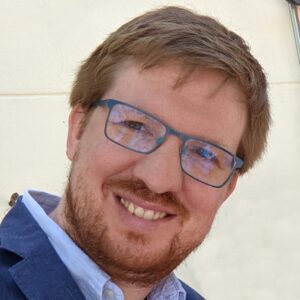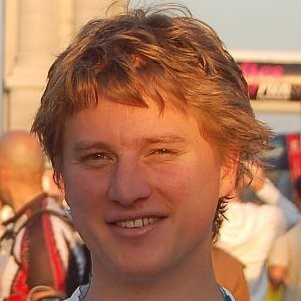
Fernando Martín
Departamento de Química, Universidad Autónoma de Madrid, 28049 Madrid, Spain
Instituto Madrileño de Estudios Avanzados en Nanociencia (IMDEA-Nano), 28049 Madrid, Spain
Attochemistry: chemistry at the attosecond time scale
When: 12:00-13:00 CET, October 10th (Thursday), 2024
Where: Salón de Actos, ICMM-CSIC, Campus de Cantoblanco, Madrid
With the advent of attosecond light pulses at the dawn of the twenty first century, access to the time scale of electronic motion, i.e., the ultimate time scale responsible for chemical transformations, was finally at our reach. Since the first attosecond pump-probe experiments performed in molecules [1,2], the field has grown exponentially, leading to a discipline that we call attochemistry [3]. As a result, it is nowadays possible to follow in real time the motion of the “fast” electronic motion in molecules, mostly in the gas phase, and understand how this motion affects the “slower” motion of atomic nuclei and vice versa. There are, however, new scenarios [4] that will allow one to extend the range of applications to more complex molecular systems, including the condensed phase, and to overcome some of the limitations of current attosecond technologies [5-9], such as the low intensity of attosecond pulses produced by high harmonic generation, the impossibility to generate such pulses in the visible and UV spectral regions to avoid molecular ionization, or the difficulties to combine them with truly imaging methods as those used in condensed matter physics for direct time-resolved observations of the electron density without the need for reconstruction from measured photoelectron, photoion or transient absorption spectra.
In this talk, I will describe current experimental and theoretical efforts aiming at overcoming the above-mentioned limitations, thus giving attochemistry the necessary push to investigate problems of real chemical interest.
References: [1] G. Sansone, F. Kelkensberg, J. F. Pérez-Torres, F. Morales, M. F. Kling, W. Siu, O. Ghafur, P. Johnsson, M. Swoboda, E. Benedetti, F. Ferrari, F. Lépine, J. L. Sanz-Vicario, S. Zherebtsov, I. Znakovskaya, A. L’Huillier, M. Yu. Ivanov, M. Nisoli, F. Martín, and M. J. J. Vrakking, Nature 465 763 (2010). [2] F. Calegari, D. Ayuso, A. Trabattoni, L. Belshaw, S. De Camillis, S. Anumula, F. Frassetto, L. Poletto, A. Palacios, P. Decleva, J. B. Greenwood, F. Martín, and M. Nisoli, Science 346, 336 (2014). [3] M. Nisoli, P. Decleva, F. Callegari, A. Palacios, and F. Martín, Chem. Rev. 117, 10760 (2017). [4] F. Calegari and F. Martín, Commun. Chem. 6, 184 (2023). [5] A. Palacios and F. Martín, WIREs Comput. Mol. Sci. e1430 (2020). [6] G. Grell, Z. Guo, T. Driver, P. Decleva, E. Plésiat, A. Picón, J. González-Vázquez, P. Walter, J. P. Marangos, J. P. Cryan, A. Marinelli, A. Palacios, and F. Martín, Phys. Rev. Res. 5, 023092 (2023). [7] M. Galli et al, Optics Letters 44, 1308 (2019). [8] M. Reduzzi et al, Optics Express 31, 26854 (2023). [9] M. Garg, A. Martín-Jiménez, M. Pisarra, Y. Luo, F. Martín and K. Kern, Nature Photonics 16, 196 (2022). [10] F. Vismarra, F. Fernández-Villoria, D. Mocci, J. González-Vázquez, Y. Wu, L. Colaizzi, F. Holzmeier, J. Delgado, J. Santos, L. Bañares, L. Carlini, M. Castrovilli, P. Bolognesi, R. Richter, L. Avaldi, A. Palacios, M. Lucchini, M. Reduzzi, R. Borrego- Varillas, N. Martín, F. Martín, and M. Nisoli, Nature Chemistry in press.







 Christopher W. Wächtler
Christopher W. Wächtler 